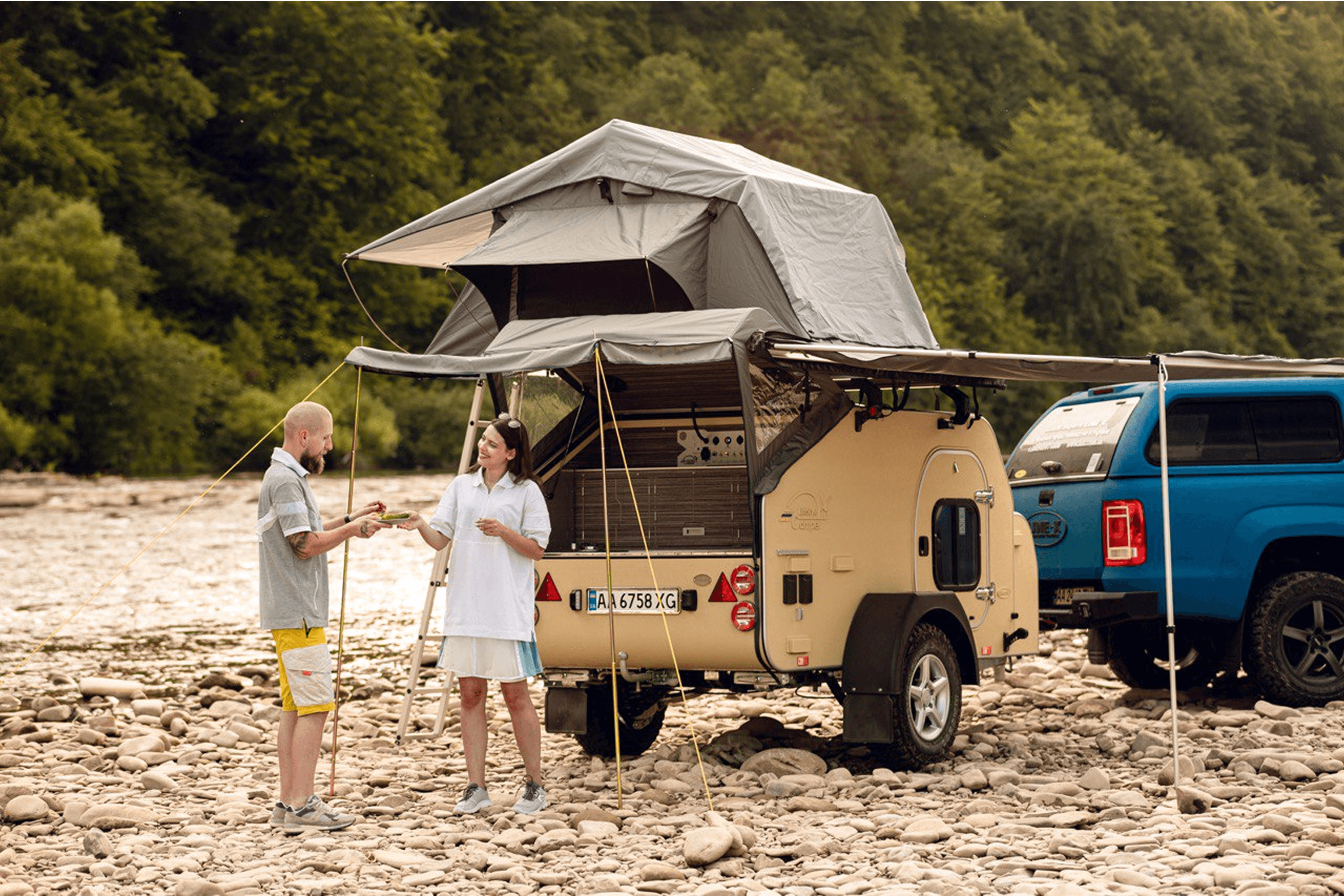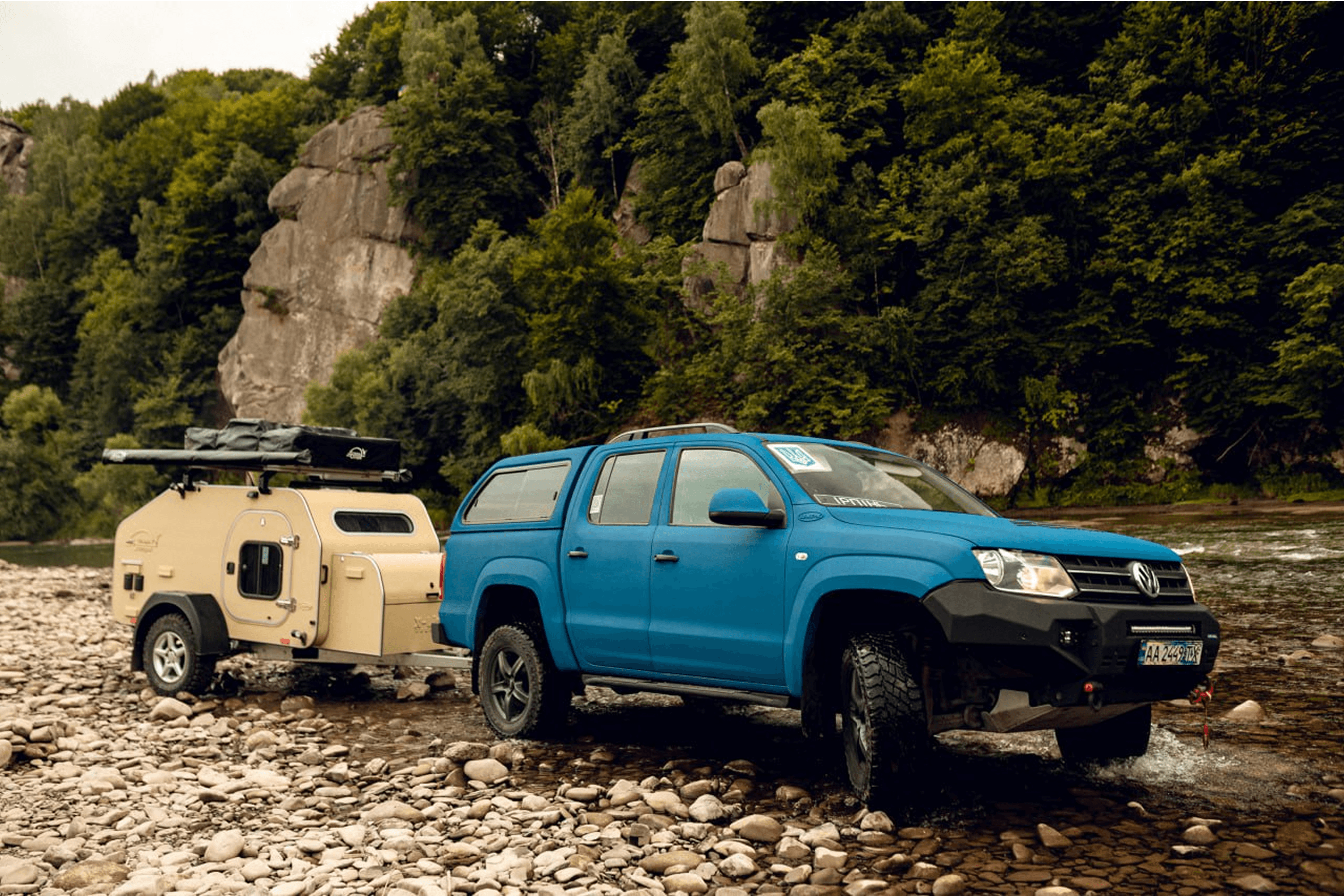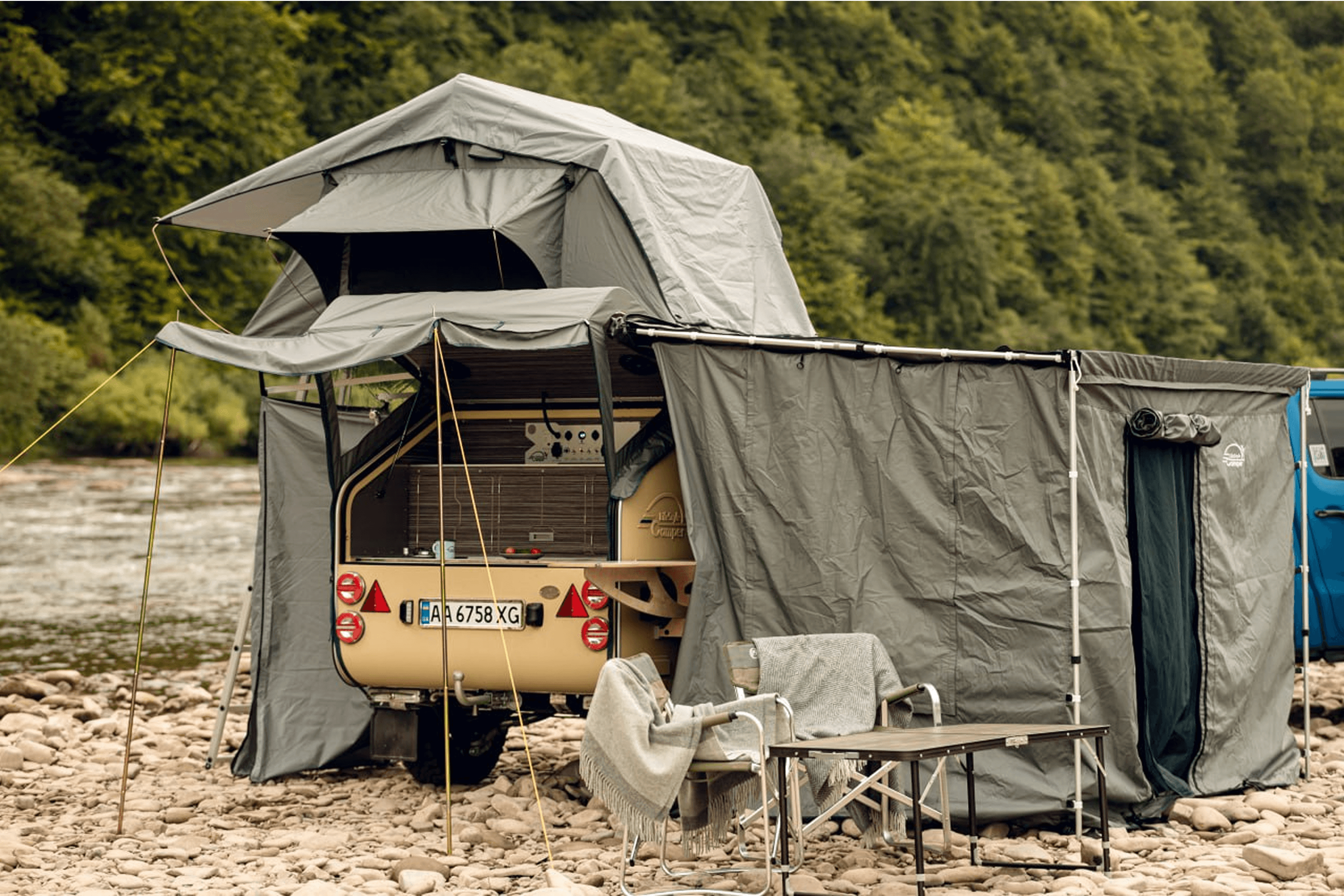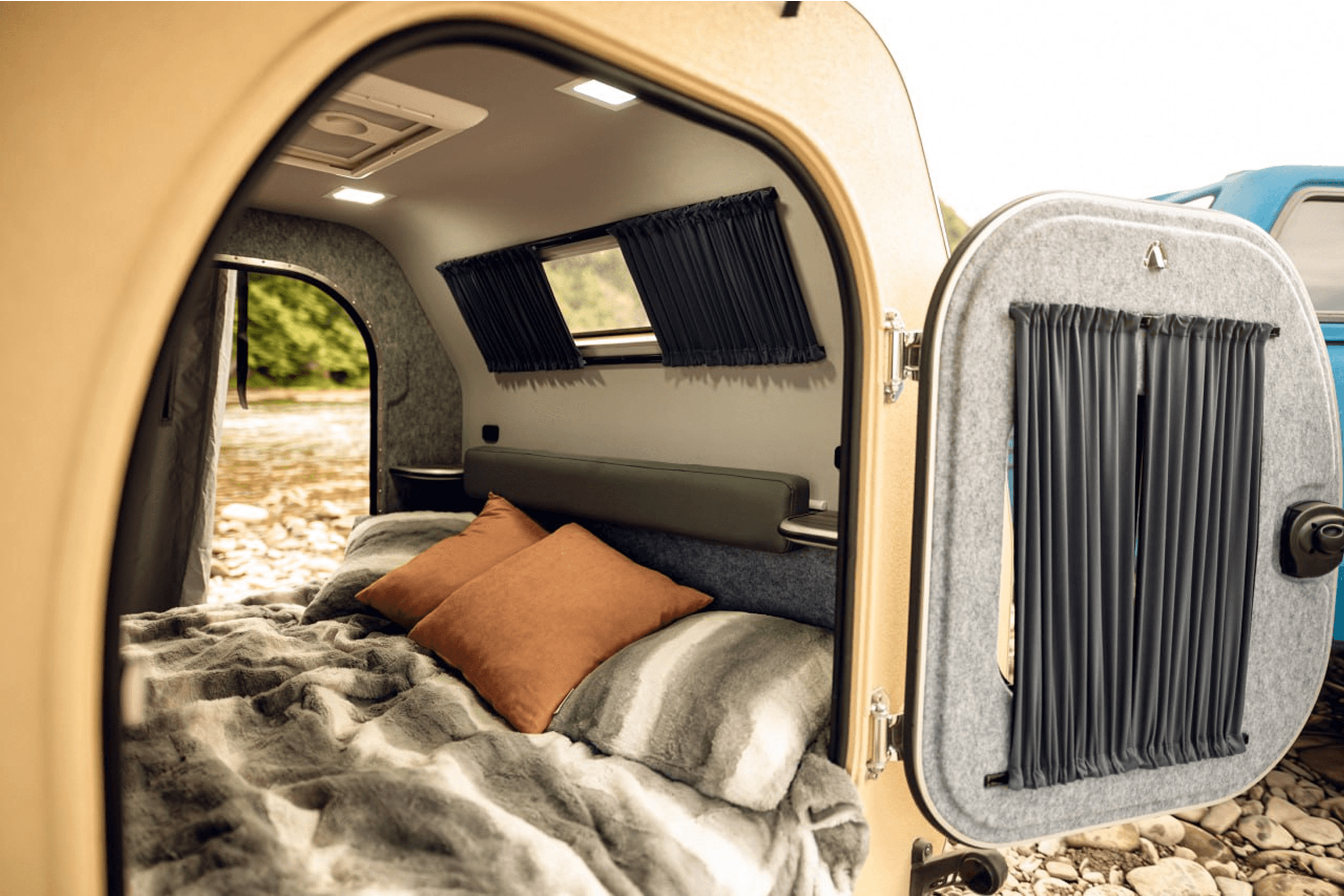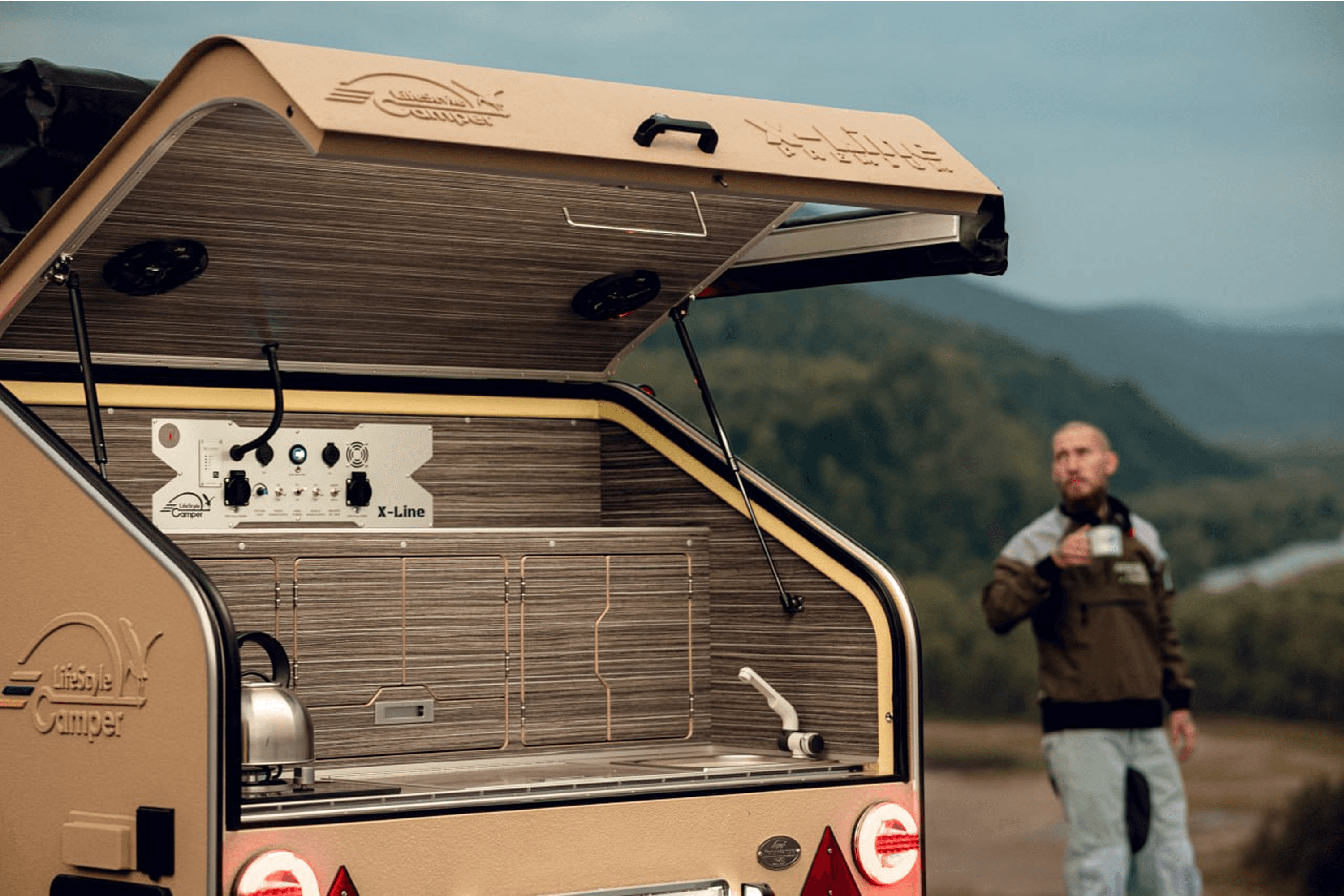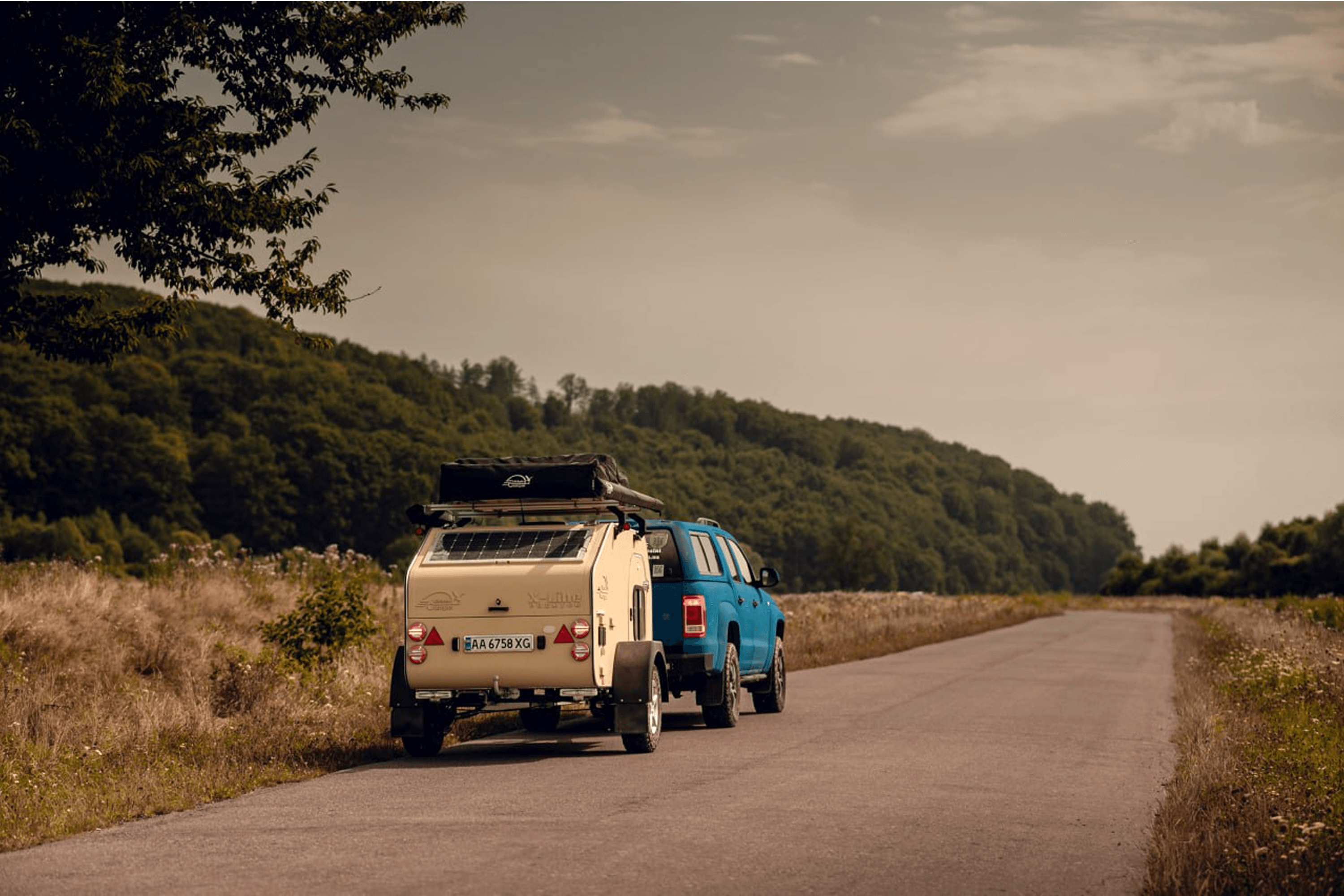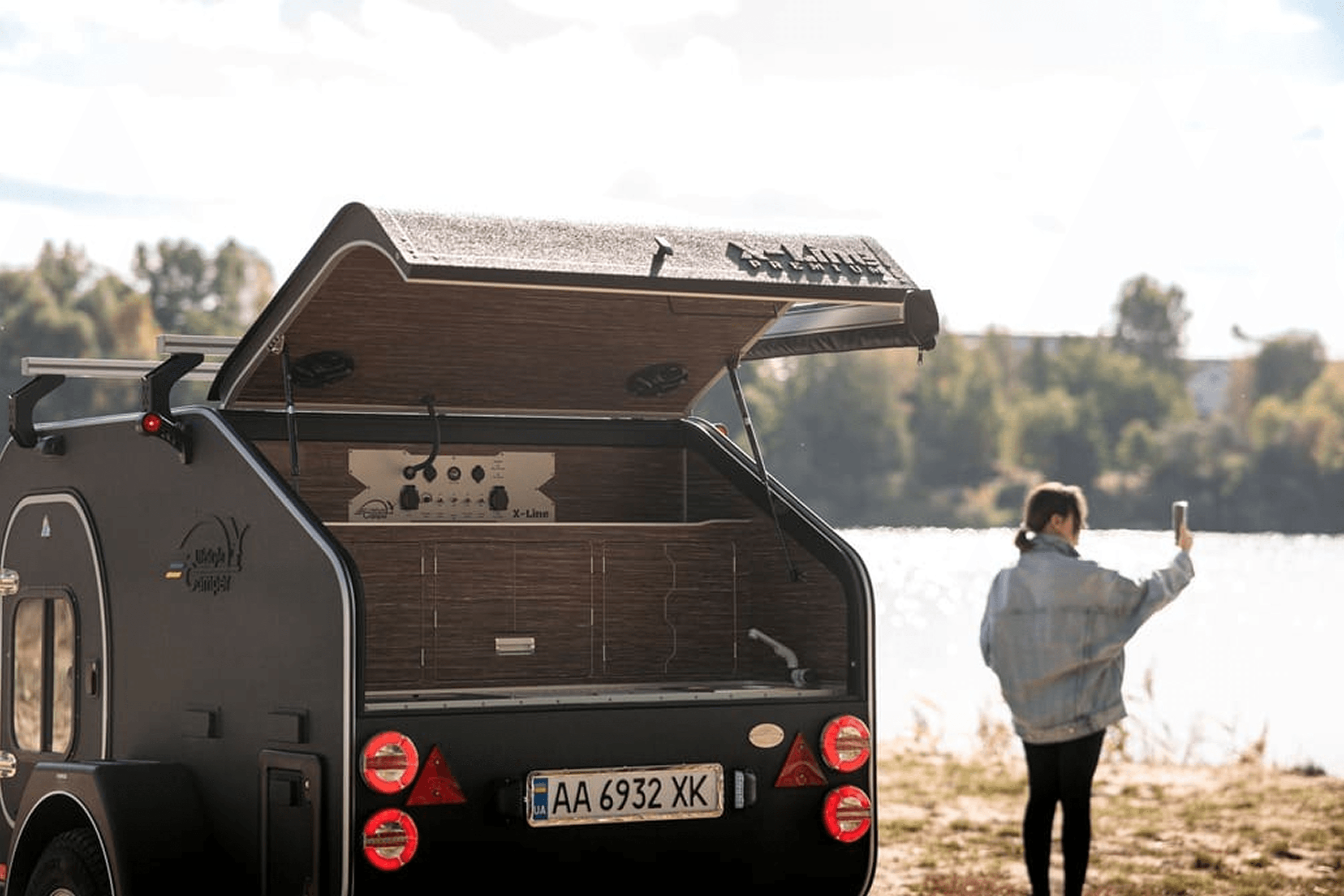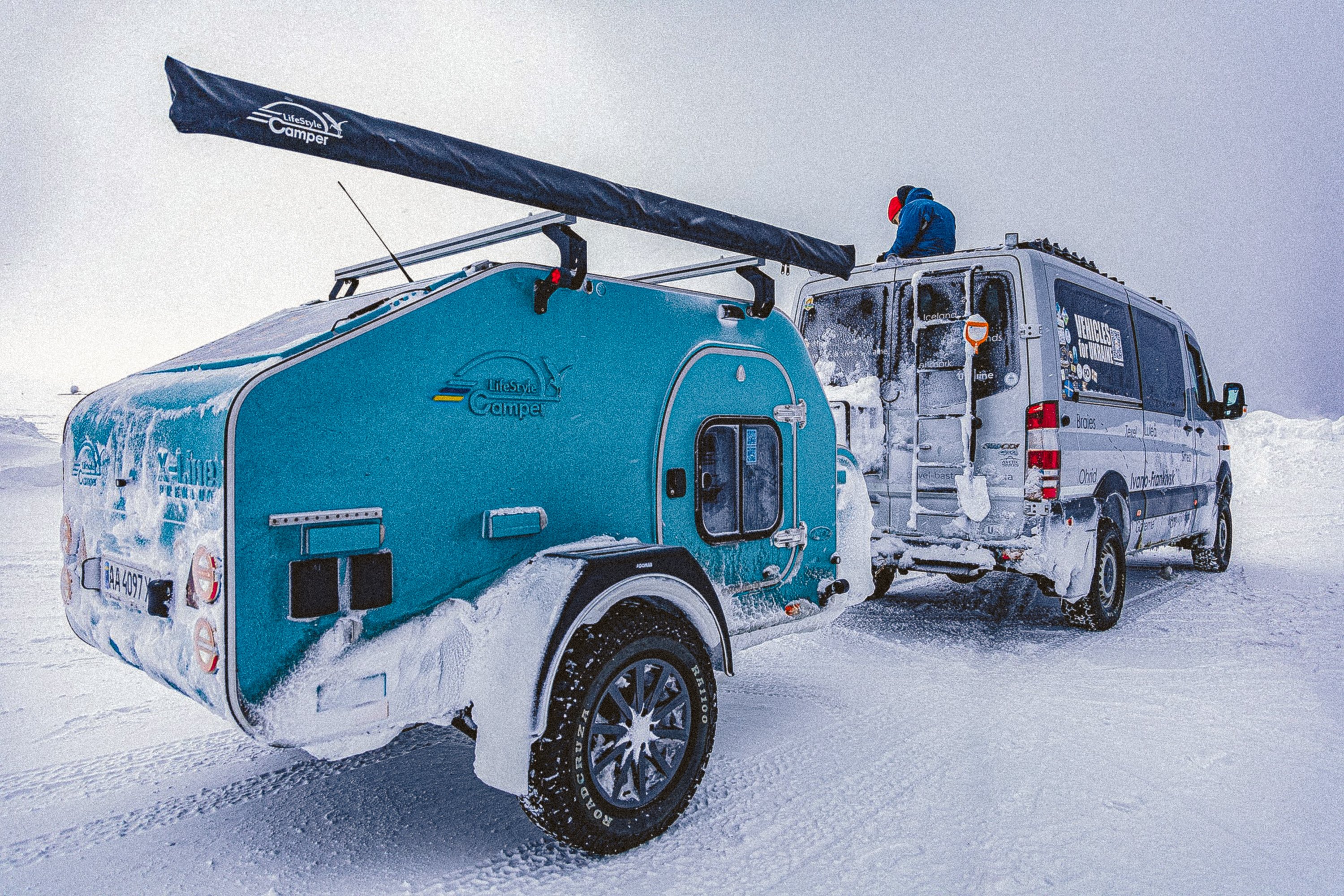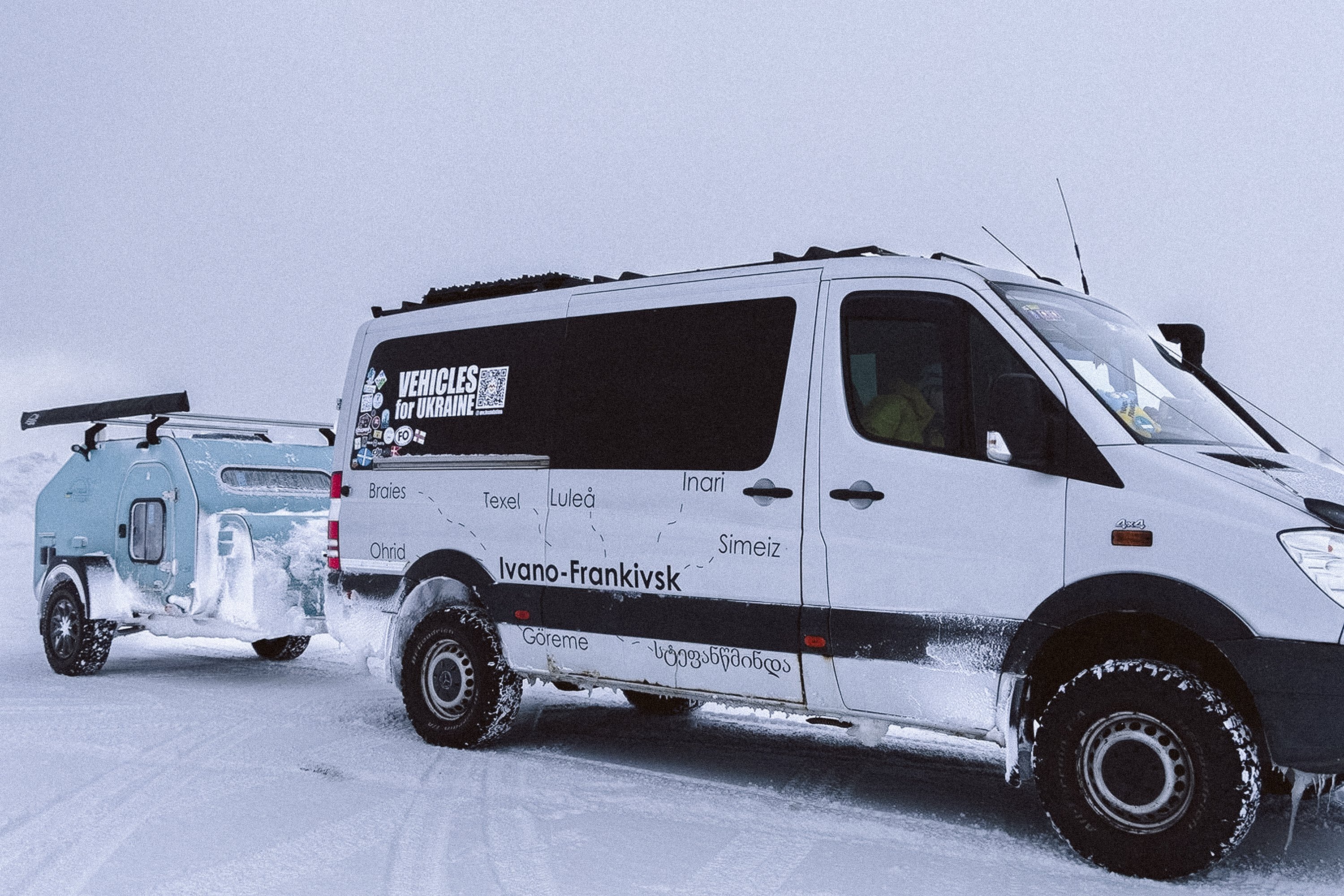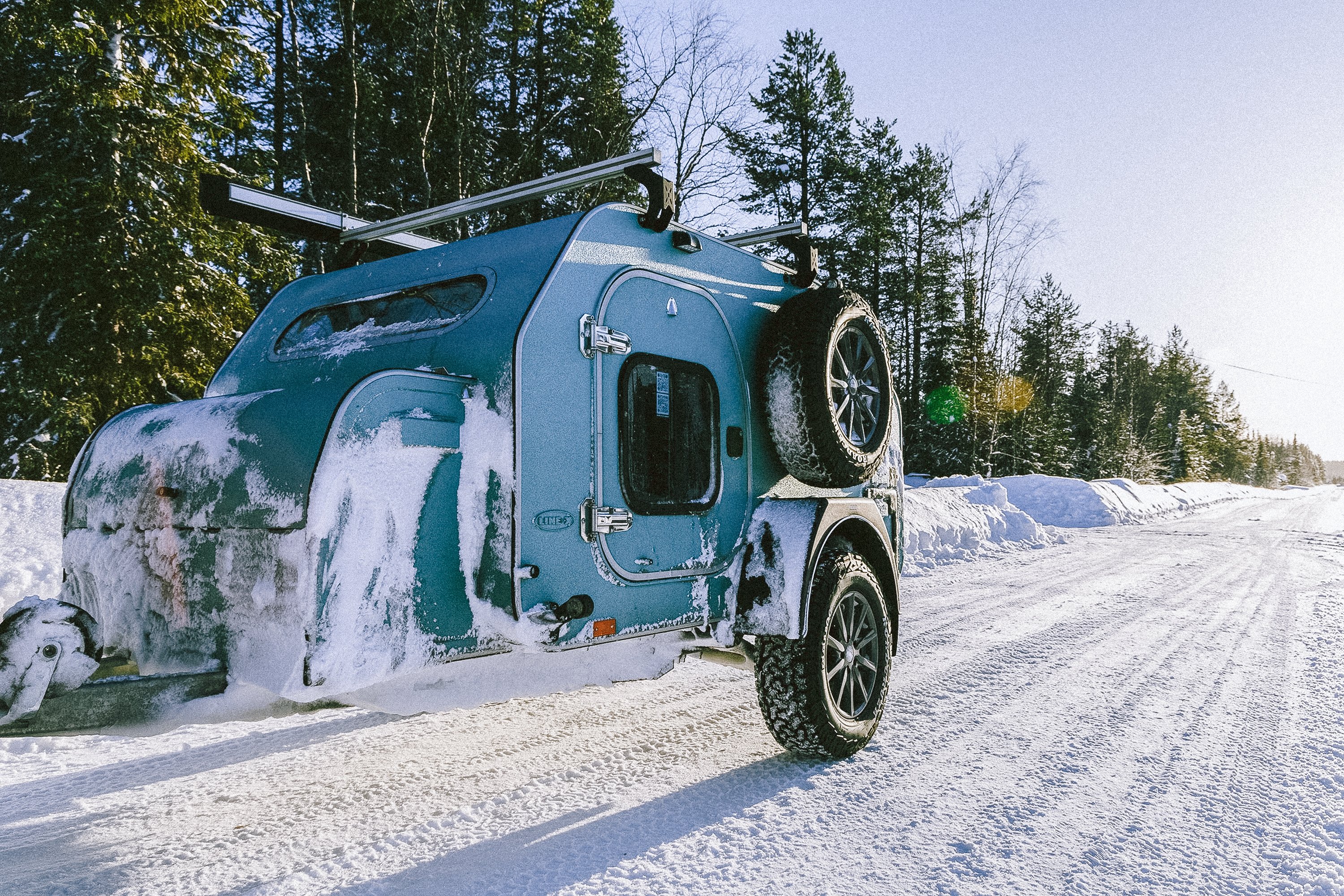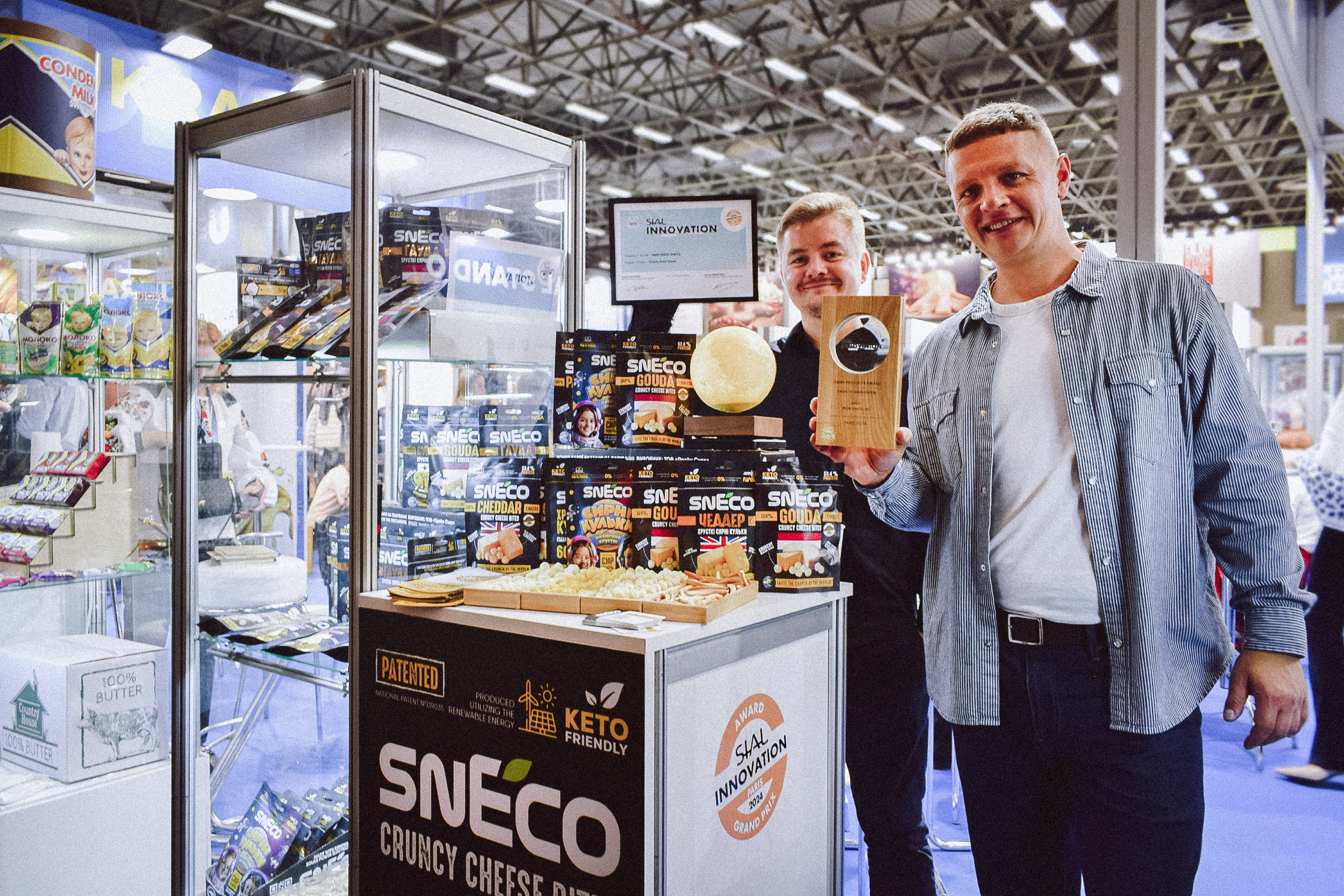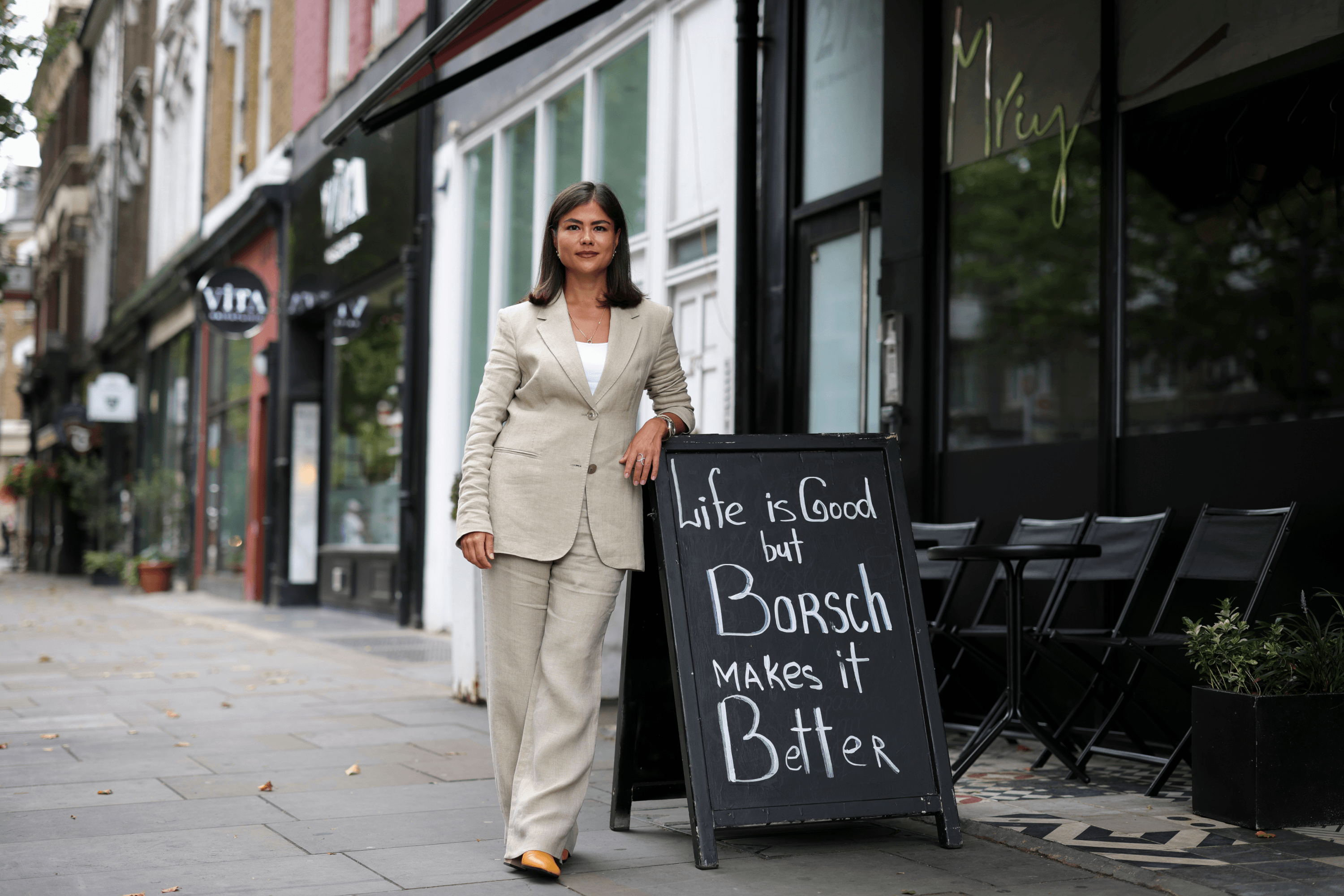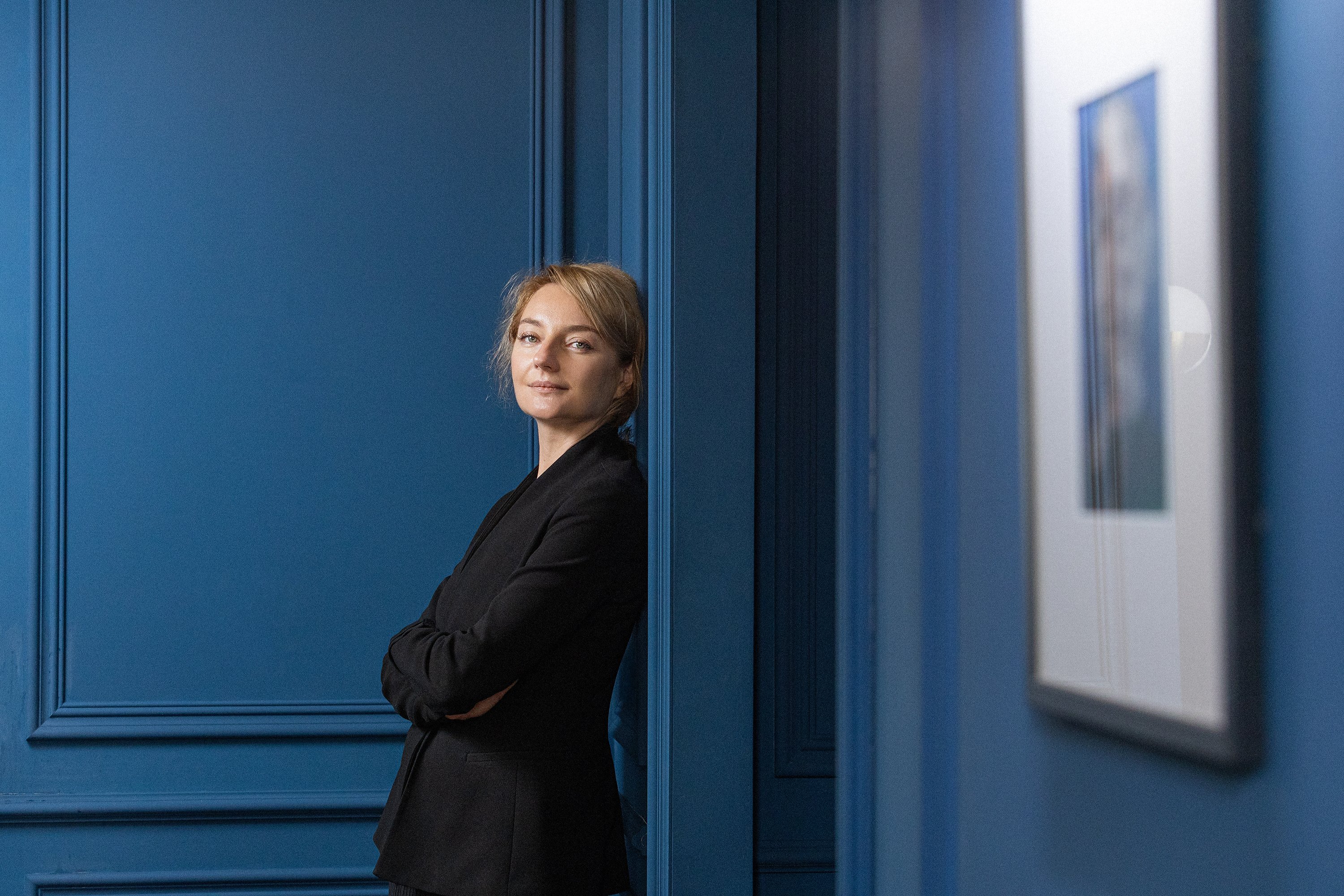Julia Shapovalova and Anatoliy Burbeza are a brother-and-sister duo who have loved travelling since childhood. Their parents instilled this passion: their mother, a geography teacher, and their father, a former military officer with whom they were constantly on the move. When Anatoliy grew up, he wanted to travel in campers. One after another, he bought new German models, but they all had the same problem: they broke down quickly, designed for Germany’s ideal roads rather than the realities of Ukraine. That’s when Anatoliy decided that, together with friends in a garage, he could build the perfect camper. In the process, he realized it could be more than just a hobby — it could become a business. In 2018, together with his sister, he founded Lifestylecamper in Kyiv.
By 2022, they had opened branches in 20 European countries, and their campers were being purchased in Saudi Arabia, Qatar, and New Zealand. This was possible because of their exceptional quality: the campers are built from the same wood used in yacht construction, reinforced with a material that also covers the Pentagon, and designed to resemble an airplane wing. Now, Anatoliy and Julia are preparing to enter new markets — the U.S. and Canada. To do this, they will essentially have to create a new camper that only resembles their existing models on the outside, because these markets are even more heavily regulated than Europe, with stricter technical requirements.
YBBP journalist Artem Moskalenko met with Julia Shapovalova, CEO of Lifestylecamper Group, to discuss the differences between entering European and American markets, and what gives Ukrainian campers a competitive edge abroad.
Why did you decide to start a camper company, given their relative unpopularity in Ukraine?
The main reason is the love of tourism my brother and I share, in all its forms. Before launching the company, we had no experience in manufacturing. My brother studied economics with a focus on business management. I am also an economist, but my specialization was international economics. Our previous experience, however, had nothing to do with producing anything.
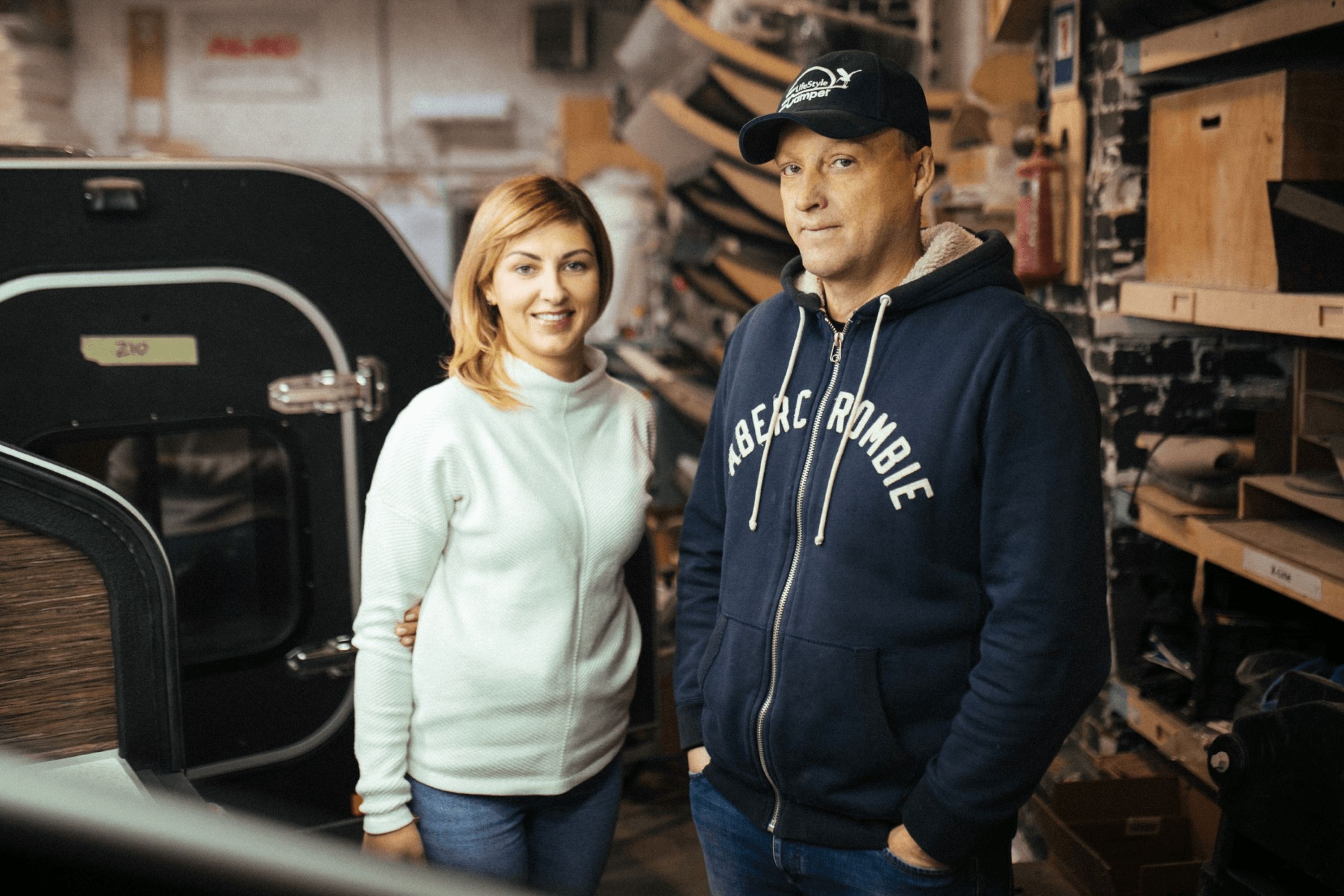
The first motorhome my brother built was when he was 20. He found a military truck somewhere and converted it into a home on wheels. Later, he started buying German campers and eventually purchased a proper motorhome. We loved taking them on trips to Crimea. But German campers are designed for Germany’s perfect roads. In Ukraine, they began breaking down after just a year of use.
Anatoliy, together with friends, started developing his own camper in his garage. He soon realized it could become a real business. He developed a business model, rented a space, and started certifying the vehicles. I joined them in 2017 — I came to visit just to see what they were doing. But they offered me a role in marketing and sales, and I accepted. By 2018, we had founded the company Lifestylecamper.
What was your company’s starting capital?
It’s hard to say exactly, since the exchange rate was different back then, but I think it was around ₴2 million at the time.
Where did you find your first customers?
In 2018, we attended the Düsseldorf exhibition for the first time. It is the trendsetting event in Europe’s camper industry. At that point, we only had Ukrainian certification for our campers as vehicles. That wasn’t enough to sell in Europe, but it was sufficient to take part in the show.
Those were an incredible ten days. We made it to German prime-time television on the most popular channels and gave an interview to Deutsche Welle. Everyone liked our product. Thanks to that, we connected with many people in the industry. We also secured a German partner and sold him several campers, even without European certification — he certified them individually. After that, we started preparing to enter the European market.
Did you decide from the very beginning to focus on exports, and if so, why?
Tourism in Ukraine, and camper culture in particular, is quite underdeveloped. Before the full-scale war, we were only just beginning to see somewhat stable sales in the domestic market, but it remained a small share. That’s why our focus was immediately on Europe, where this culture has existed for decades. By 2022, we were exporting 90% of our products, with just 10% left for Ukraine.
We started with a small-scale production, which was enough at the time. By the start of the full-scale invasion, though, we had grown to the point where orders were booked a year in advance. We were planning to move to a larger facility and had already built a factory in the Kyiv region. It was nearly ready when February 24, 2022, arrived. The factory ended up in a gray zone, near Bucha and Irpin, and was hit by seven landmines. We had to postpone the move and only relocated there in the summer of 2023.
What losses did you suffer as a result of the attack?
The factory was nearly finished, with designer renovations, but we had to start over from scratch. A nearby office building was also damaged. We still haven’t been able to restore it. We’re hoping to receive grants or compensation to support the reconstruction. Overall, the losses came to around ₴10 million.
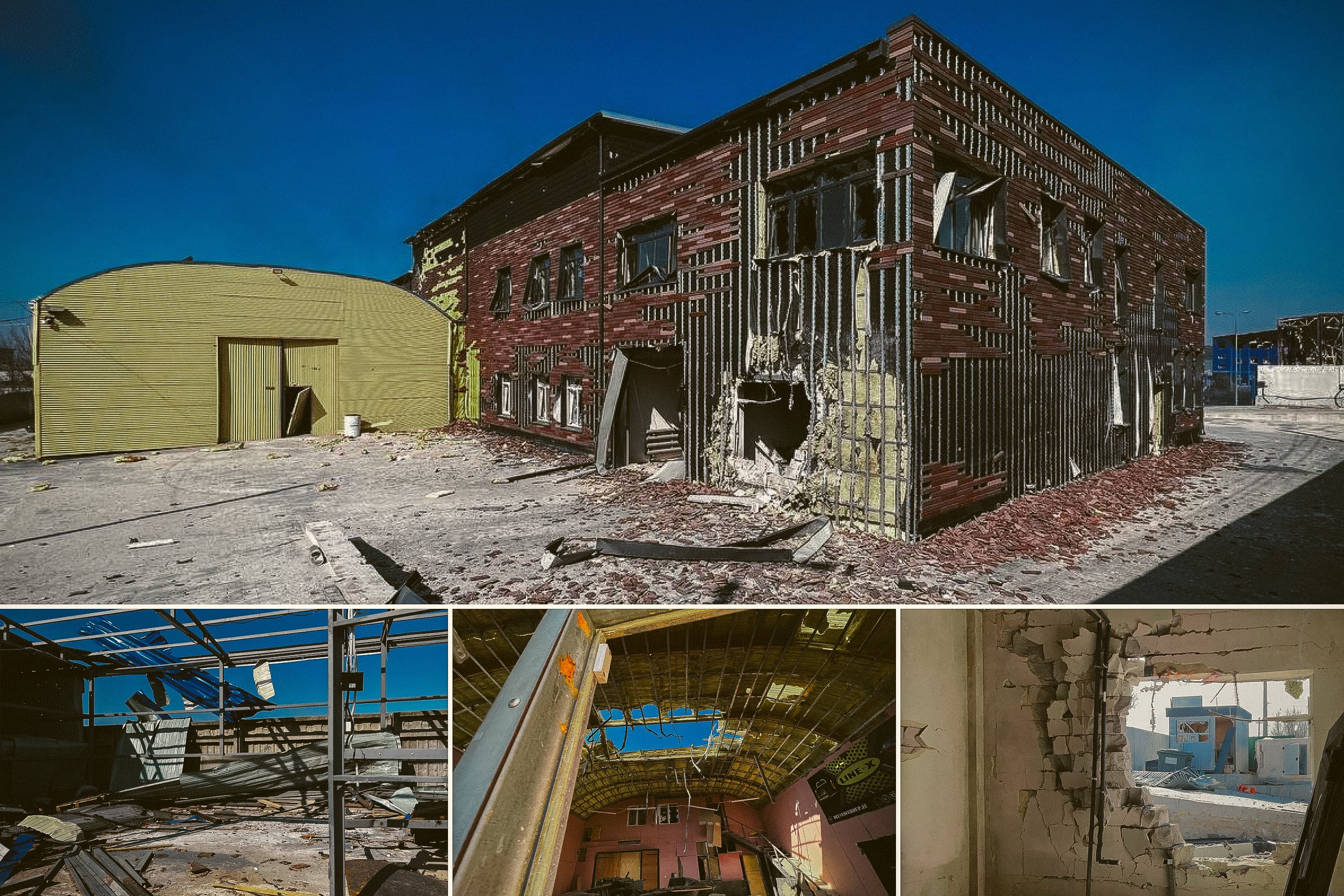
How much do camper prices differ between Ukraine and Europe, and why?
In Europe, campers cost between €28,000 and €45,000. In Ukraine, the price is lower — around €10,000 to €20,000. Here, we sell them with only a small markup because we need to build the market. We want to cultivate this culture so people understand what campers are really for. Of course, in Europe the price also includes transportation and customs clearance. Today, exports have fallen to 80%, with 20% of campers staying in Ukraine. The European market has also slowed because of Russia’s full-scale war against Ukraine, while the Ukrainian camper market continues to develop despite the war.
What challenges did you have to overcome to enter the European market?
No one in Ukraine had done this before. There were no certified camper manufacturers in the country, let alone those who exported them. When we began looking into it, we realized we’d need to open a local office in Europe to operate. So we set up a company in Latvia. We wrote to the local Ministry of Transport, and they gave us contacts for European companies that handle certification. We spent six months preparing the documents, after which they came to our production site in Ukraine, reviewed everything, and certified us. It’s now an ongoing process, with visits every year and a half to renew our certification.
It wasn’t easy, but between 2019 and 2022 we established offices in 20 European countries, and today our campers are used in 26 countries.
Do you still have a branch in Latvia?
Yes, it’s needed to maintain consistent certification of our products, but it only has an accountant and a director handling paperwork. Sales in Latvia are managed by other companies acting as our representatives.
How did you manage to win against the competition in the European market?
It happened gradually. At first, people were hesitant to trust us because the brand was unknown — and Ukrainian But we earned their trust with a high-quality product that outshone many European competitors.
What exactly do you mean by “quality” when it comes to your campers?
It’s all about attention to detail. Our camper is made from French, eco-friendly, eight-layer plywood — the same material used for yachts and children’s furniture because it’s formaldehyde-free and completely odorless. We tried many different types of materials, but we always came back to this one. It’s not cheap, but it’s the only material that ensures the quality we aim for.
All our adhesives, sealants, and varnishes are water-based — again, the kind used for children’s furniture, they’re the safest. Beyond being eco-friendly and safe, our campers are also very durable. The material we use to coat one of our main models is Line-X, an American two-component polymer. It’s not paint or varnish, but a very strong, specialized coating. In the U.S., the Pentagon and all federal agencies are covered with it. “We’re also the official distributors of this material in Ukraine, providing it to various companies. It’s used for everything from lining food containers to military applications.
The camper’s structure is engineered like an airplane wing, with plenty of reinforcing ribs. And that’s not all — we use two types of suspension, road and off-road, from Alka and Knot, respectively. The Knot suspension, however, wasn’t quite right for us. So we redesigned it, increasing the wheel travel from 6 cm to 16 cm and the camper’s rollover angle to 48°. We sent the blueprints to the company so they could create an exclusive suspension for us, and they agreed. This made our campers much more durable off-road.
How many campers can you produce now?
Currently, our new factory is only operating at half capacity. This allows us to produce about 20 campers per month.
Why only half?
Right now, we’re producing exactly as much as the European and Ukrainian markets demand. But we’re looking for partners to expand into new markets. In the future, we aim to enter Saudi Arabia, the UAE, and Qatar. We’re also already working on launching in the Canadian and U.S. markets. We’re currently obtaining certification and looking for partners to sell our campers there.
Why did you choose Canada and the U.S. for expansion?
We analyzed these markets and saw that they’re still growing, unlike in Europe. They’re also significantly larger. We believe that with our quality, we can find a place there. Initially, entering these markets would allow us to increase production by at least 50% and fully utilize our current capacity. Production could even grow to 100%, so we’re considering expanding our facilities after entering the Canadian and U.S. markets.
What are you doing to enter the Canadian and U.S. markets, and how is it different from your European experience?
First, we submitted an application expressing our desire to obtain certification from the Canadian Ministry of Transport. We didn’t hear back for some time, but eventually received a positive response confirming that we could apply. After that, we began looking for companies that could help us with this. There are quite a few, and we chose one, even made the first payment. The company is based in the U.S., but they handle certification for both Canada and the U.S. We’re starting with Canada, where we’re currently preparing technical documentation and considering opening a local office.
But it’s much more difficult than entering the European market. From a technical standpoint, many aspects are not the same: the suspensions, electrical systems, and brakes — an American camper will basically be a new product. Visually it may look identical, but inside everything is altered. The market itself is very heavily regulated: they don’t want other countries in it, so every little component has to be certified. It’s difficult and takes time. Here, nothing works the way it does in Europe. But we’re not giving up, and I believe we’ll overcome this challenge.
Will organizing the shipment of campers from Ukraine to North America be difficult?
We’ve already shipped our campers to Iceland, the UAE, and there are even about 10 in New Zealand. We send them in containers, and shipping to North America will work the same way. Of course, this will increase the cost, but every product has its buyer. Shipping will take about a month.
How much investment have you raised so far, and how much more do you plan to raise to enter these markets?
So far, we’ve only calculated the cost of certification, which is around $50,000. We don’t yet know how much more money is needed.
You said that because of the war, the market has dropped not only in Ukraine but also in Europe. How else has the war affected you?
After the full-scale invasion, we gained fewer new partners, although some still came on board. Now, we are trusted not only for the quality of our products but also because they know we are reliable partners. We resumed production on April 11, 2022, immediately after the Russians withdrew from Kyiv. We didn’t delay a single contract.
We even had a story from February 23, 2022, when we loaded a truck full of campers bound for Norway. The driver decided to stay overnight in Ukraine instead of leaving immediately. The next morning, the war began. The truck remained near the factory, and the driver returned home to the Chernihiv region, unfortunately ending up under occupation. We found another driver and still managed to deliver the campers to Norway. The Norwegians thought we were “crazy,” but they cooperated and acted quickly. Within a day, they paid in full and received their campers without any delays. A local car enthusiast magazine even wrote about us. But overall, such stories inspire trust in our company.
How is the war affecting your business now?
The main challenge has been the slowdown in the European market. 2024 and the first half of 2025 were especially difficult for us. But things are gradually improving: people are starting to make purchases again, though they remain cautious — afraid of the war, that nighttime shelling might affect their orders. We’ve gotten used to it. Do you know what Ukraine is called? At night, it’s Aleppo; by morning, it’s Monaco.
Does the brand’s Ukrainian origin help you, or does it make things more difficult?
At the moment, there’s less trust because of the war. Even before, there wasn’t much. People were often surprised to learn that Ukrainian campers even existed. We were constantly asked, “UK?” and we would correct them: “No, UA,” and explain where we’re from. But quality and reliability work against these fears.
In Ukraine, your products are available in some dealerships, but you also partner with the company MandryInUA. How did this collaboration start, and what does it involve?
It started in 2023. One evening, I was at home when a young man wrote to me: “I’m sitting in a trench right now, dreaming about your campers.” That was soldier Maksym Stukalo. He had volunteered for the Armed Forces of Ukraine, and prior to that, served as Director of Sales at Coca-Cola. Later, discharged from the army for health reasons, Maksym went through rehabilitation and decided to start his own business — MandryInUA. He won several grants and used them to buy various campers. He rents and sells these campers. But even there, our campers outperformed the competition.
We’re currently building a TinyHouse for him, which is our new product. He plans to place it in the Carpathians and rent it out. Our partnership has a social dimension, but it’s also a business: we earn from selling our campers, and it also serves as advertising since Maksym promotes us widely. People can even rent a camper first before deciding to buy one.
What advice would you give to entrepreneurs who also want to enter foreign markets, Europe or America?
I would advise not to wait for a special moment. You need to take steps one after another. If you can do something today, do it. Don’t wait until Monday or for some special conditions to appear. And of course, you need to love what you do. That’s the first thing that drives us, me and Anatoliy. We love our product, our campers. It’s been our passion almost since childhood.
Do you use your own campers for leisure?
Honestly, no. We just don’t have the time. We only travel if we need to do a photoshoot; otherwise, there’s no time at all. The war has brought many challenges that demand constant attention.
Back in 2021, our team went on a camper trip for a vacation. Everyone was worn out from COVID, and it was the perfect opportunity for team building and unwinding. Now, people are tired too, but there’s no time for that. We have to keep working.
Do you dream of going on a trip with your campers?
My brother and I had a shared dream. Besides campers, he also loves sailing. He’s a captain, so we wanted to explore the Greek islands. But that’s a dream for the future, after the war. Right now, our focus is on work and expanding into new markets. My personal dream at the moment is the U.S. and Canada.

